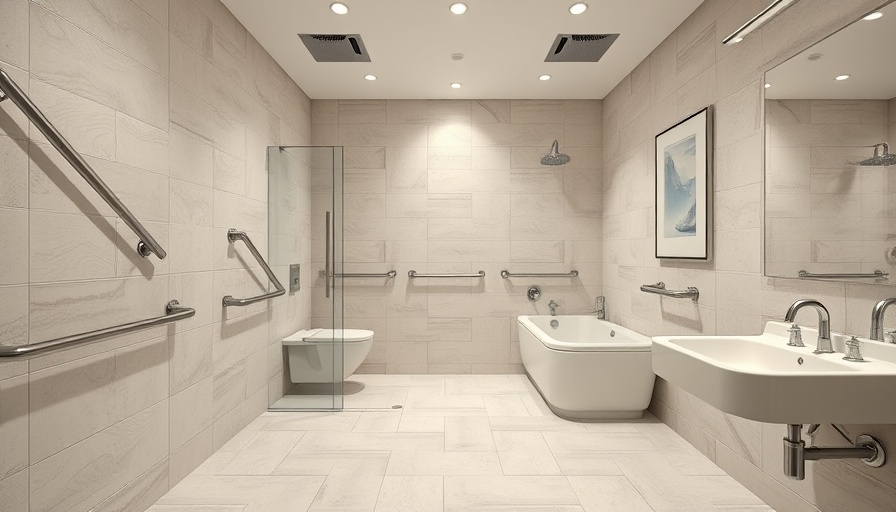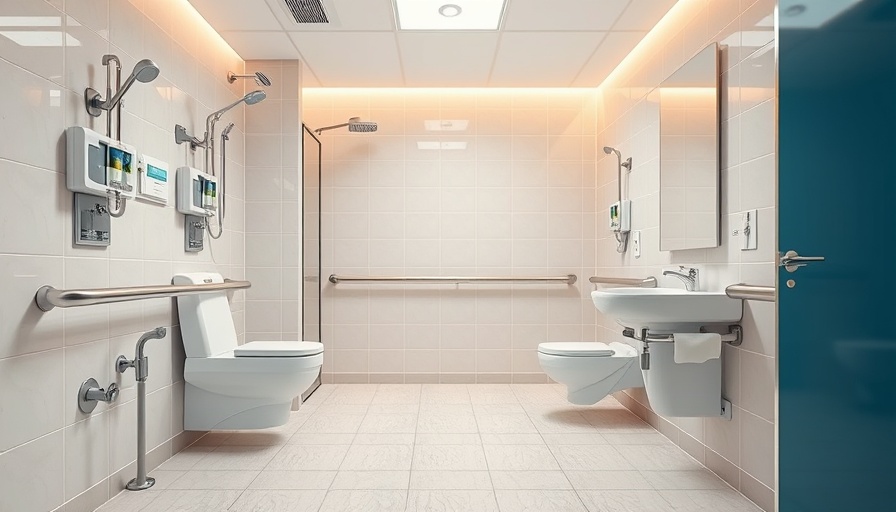
Creating a Safe Bathroom: Why Every Age Matters
Bathroom safety is crucial for everyone, especially as individuals age or face unique challenges. Everyone—from children to seniors—can experience slips and falls, making it a significant concern. According to the CDC, over 200,000 people are treated in emergency departments for bathroom-related injuries each year. Therefore, addressing the specific needs of various age groups through thoughtful design is not just beneficial; it's essential.
Conducting a Thorough Safety Audit
The first step toward a safer bathroom environment is conducting a comprehensive safety audit. This process involves examining the current layout, identifying potential hazards such as slippery surfaces and clutter. It’s also crucial to evaluate lighting conditions—adequate brightness can make a big difference in preventing accidents, especially for older adults whose vision may be compromised.
Engaging Users: Building a Safer Space Together
Incorporating user feedback into the safety audit fosters collaboration and encourages individuals to voice their concerns. Children might express what toys they need nearby, while seniors may highlight areas where they feel unsteady. Taking these inputs into consideration not only enhances safety but also empowers users, reinforcing the importance of their needs.
Universal Design: Accessibility for Everyone
Embracing the principles of universal design is pivotal in creating an inclusive bathroom space. For instance, installing a walk-in shower with grab bars can accommodate users of all ages and mobility levels. Features like handheld showerheads serve both children and seniors, providing flexibility and independence. Moreover, ensuring adequate space for maneuverability is paramount, especially for individuals using mobility aids.
Non-Slip Flooring: A Simple Yet Effective Solution
One of the simplest and most effective upgrades is the installation of non-slip flooring. Utilizing slip-resistant tiles or textured vinyl can dramatically reduce the likelihood of accidents. These materials offer a better grip, particularly in wet areas like the shower or near the bathtub, ensuring that users can move safely without the fear of falling.
Essential Fixtures for Enhanced Safety
The addition of grab bars and handrails is vital around showers, toilets, and bathtubs. They provide necessary support for individuals transitioning between surfaces, which is critical for those with mobility challenges. It’s important to install these bars at heights suited for all users—keeping in mind the different needs across age groups.
Lighting: Shedding Light on Safety
Proper lighting plays an instrumental role in bathroom safety. Bright, well-lit spaces can help combat the risk of accidents, particularly in evening restroom visits. Options like motion-activated lights can provide illumination without the need to fumble for a switch, allowing users to feel secure and confident.
Common Misconceptions about Bathroom Modifications
Many believe that bathroom modifications are only necessary for elderly individuals. However, children, those with temporary disabilities, and even guests can benefit from safety adaptations. Everyone deserves a bathroom that is not just functional but also safe and comfortable.
Future Trends in Bathroom Safety
Looking ahead, we can expect more innovative design solutions that integrate technology into bathroom safety. Smart home technologies, like automated lighting, voice-activated fixtures, and safety alerts, will enhance accessibility and security. As we prioritize these developments, we’re moving toward a future where bathroom safety is seamless and integrated into everyday living.
Drawing It All Together: Your Action Plan for Enhancing Bathroom Safety
As you seek to create a secure bathroom space, remember the importance of user engagement, thoughtful design, and practical features. Incorporate universal design principles, focus on essential safety modifications, and keep communication open with all potential users to ensure everyone’s needs are met. A secure bathroom means peace of mind for families and independence for individuals.
For further guidance on creating accessible spaces for all individuals, explore resources, checklists, and expert insights tailored to your needs.
 Add Row
Add Row  Add
Add 




Write A Comment